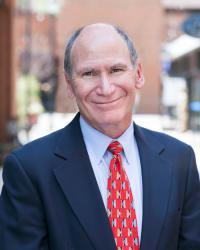Published in 2017 Colorado Super Lawyers magazine
By Steve Knopper on March 15, 2017
In 2005, Kathryn Miller was in the middle of an employment discrimination deposition on the plaintiff side, and she and opposing counsel were shouting objections—”going at it, which is what you do,” she says—when her client burst into tears.
During a break, Miller huddled with her. “What’s wrong?” she asked. “Things are going really well.”
“This is not about me or my issues anymore, is it?” the client responded. “This is about you and the other lawyer and all the issues you’re fighting about that I don’t even understand.”
That case never went to trial. Shortly thereafter, Miller decided to focus exclusively on what had been her side practice: alternative dispute resolution.
“I decided she was exactly right,” says Miller, the founder of Littleton Alternative Dispute Resolution Inc. “You lose sight of the reasons people come to you to get their cases resolved in the battle of litigation.” With ADR, she adds, “I focus way more on the needs of the clients and how they feel and what caused them to get into this dispute. In the litigation system, it’s largely the opposite of that.”
Miller is part of a trend in the law—away from the courtroom, away from trial—but many within the legal community aren’t so sanguine about it.
The modern conception of “a jury of your peers” began in 12th-century England and lasted more than 600 years, until King George III eliminated trials in the 18th century. When the U.S. freed itself from British rule, the Founding Fathers built jury trials into the Bill of Rights as the Seventh Amendment in 1791. Acutely aware of this history, many judges and attorneys have been dismayed by the recent trend. “The Vanishing Trial,” a landmark 2004 study reported by the American Bar Association, noted that federal courts nationwide tried more cases in 1962 than in 2002, even though in the latter year there were twice as many criminal filings and five times as many civil filings. Overall, the percentage of federal civil cases that went to trial dropped from 11.5 percent in 1962 to 1.8 percent in 2002.
“I do not see [the trend] reversing anytime soon, unfortunately,” says Christina Habas, a former district court judge, and now a personal injury-plaintiff attorney for Keating Wagner Polidori Free in Denver. “If I have a dispute, I want a jury to decide it.”
“Trials do not represent a failure of the system,” reads a 2009 report by the University of Denver’s Institute for the Advancement of the American Legal System (IAALS). “They are the cornerstone of the civil justice system.”
So why is this cornerstone eroding?
From ambush to avalanche
To begin to answer that, we need to do as Bob Woodward did in All the President’s Men: Follow the money.
“Engaging the legal system, the court system, is an expensive proposition for most folks,” says Ben Stetler, who runs his own ADR practice in Denver. “And while mediation and arbitration are certainly costly, they are often a lot less costly than having a full-blown hearing or trial.”
“It’s so expensive to get through the litigation process,” says Habas. “Although courts have tried to make it easier, every single time they try to make a fix what they really do is create another layer of complex litigation.”
Rebecca Love Kourlis, a former Colorado Supreme Court justice, is founder and executive director of IAALS. “The expense of the litigation process did indeed ramp up in the ‘90s,” she says. “It was exacerbated, in part, by the advent of e-discovery.”
It almost feels counterintuitive. Digitization is supposed to make processes faster and cheaper, but in discovery that just means there’s more to find. Suddenly, it’s possible to dredge up every email, text, tweet or Facebook post by every defendant, plaintiff or witness associated with a case. Going through it all, for both sides, takes time. And money.
“Forty years ago, discovery was not nearly the cottage industry it is now, with electronic discovery, with all these various techniques which to the parties seem like a huge waste of time and money but may be necessary to prepare a case for trial,” says James M. Lyons, a complex commercial litigator at Lewis Roca Rothgerber Christie in Denver.
“Let me give you a little background on that,” adds Gordon W. “Skip” Netzorg, a business litigator with Sherman & Howard in Denver. “What we call the new rules of civil procedure actually came into being in the late 1930s. It was an effort by courts to make sure there wasn’t any more ‘trial by ambush.’ Lawyers had to provide copies of their files to each other. That decision occurred before the invention of the commercial photocopier. Think today how many iterations of storage devices you’ve used, how many copies of things. If you’ve sent a text, where is that text? Where is every email you’ve sent? … Lawyers have spent a huge and disproportionate amount of time fighting over what documents they are and are not entitled to. Under this broad standard, that fight could be almost as expensive as trial itself. Or more expensive.
“You’ve heard about the IBM case in the ‘60s and ‘70s, where there were warehouses full of documents?” he adds. “Now you can get them on a thumb drive.”
So how much does discovery cost these days? “If you’re a plaintiff’s lawyer,” says Habas, “and you’re repping an injured person, before you stand before the jury you’ve spent $50,000 to $100,000 just securing expert presence at trial. Not a lot of people can handle that kind of risk.” Jim Leventhal, a medical malpractice attorney with Leventhal & Puge in Denver, estimates it costs between $100,000 and $600,000 in various expenses just to bring a case to trial.
It’s become so costly, adds Bradley Levin, an insurance lawyer with Levin Sitcoff in Denver, that it’s mostly corporations that can bear the burden. “It basically becomes a system for only the people with the wherewithal to do it,” he says.
And as costs to bring a case to trial have risen, potential damage awards have been curbed. In 1986, Colorado passed a law capping non-economic damages in injury cases at $250,000 (adjusted for inflation, $550,000); or, if there is “clear and convincing evidence,” $500,000 ($1 million, adjusted). Med-mal cases have their own caps: $300,000 in non-economic damages, $1 million total, with potential workarounds.
“It surrounded the polarization that was caused in part by the tort reform movement,” says Kourlis, “and built on the notion that plaintiffs in particular were perceived as taking advantage of the system—trying to hold defendants hostage so they would settle even non-meritorious cases. So there was just this underlying distaste for the litigation process and jury trials in particular.”
She ticks off the high-profile examples: in civil cases, the McDonald’s “hot coffee” case; in criminal, the O.J. Simpson trial.
Claims of “frivolous lawsuits,” though, are dismissed by plaintiff’s attorneys as frivolous. “This idea that ‘you’re filing a lawsuit to get the defendant, the insurance company, to pay you money, even though it’s not meritorious’—that’s ridiculous,” says Levin. “I have a business to run, and my business could never tolerate filing a lawsuit simply to get money. We file cases that have merit.”
Leventhal goes further. “The malpractice insurance companies, in conjunction with various health care groups, claimed the caps were necessary to prevent ‘runaway verdicts.’ To be clear, there has never been a runaway verdict in Colorado. Never. The real reason for the caps was to make sure that claims made by senior citizens, spouses that did not work outside the home, and children who did not have future medical needs and no provable wage loss, would not be filed.”
The impact of the caps and the cost of discovery? On an average day, Leventhal says, he has to turn down “two to 10 cases of provable malpractice.”
Doing more with less
Money, or its lack, is also a factor in the court systems themselves. Judges are like many workers in America: They’ve been asked to do more with less.
According to Richard Jolly, a research fellow for the Civil Jury Project at New York University, the last congressional authorization for a new judgeship in Colorado was in 1984. Since then, the population in the state has grown 69 percent: from 3,174,844 in 1984 to 5,355,866 in 2014.
“Most state courts don’t have the support for a fulltime law clerk, do not have a bailiff, don’t even have a court reporter,” says Habas. “And when a judge has to bring in anywhere from 30 to 150 jurors just for jury selection? … It takes hours of time.”
All of which pushes the courts toward non-trial solutions.
“Beginning in the late 1980’s, courts became very focused on reducing delay,“ says Kourlis. “Standards were adopted that set out target ‘time to completion’ for different case types. Judges tried to meet those standards and the unintended consequence was the fact that they put increased pressure on the parties to settle cases—and settle early.“
Meanwhile, arbitration clauses have become increasingly popular with corporations. The surge in enforced arbitration agreements—for everything from student loans to car loans—steers consumers into binding, private arbitration that shuts out courtroom remedies. Last August, nearly 40 Democratic U.S. senators called on the Consumer Financial Protection Bureau to crack down on forced arbitration.
ADR and mediation obviously have their benefits: cost, efficiency, predictability. “When you ask people what is it you like about mediation, for example, people say, ‘We like the idea that we have a bit more control over the outcome than if we go before a judge,’” says Stetler. “I think having that—predictability in terms of their fate—is appealing to a lot of people.”
Each solution has its place. “As much as I’m a believer in the jury system,” says Levin, “my strong preference is to talk settlement. We have clients who say, ‘This is simply wrong and I want to teach them a lesson. I just can’t let the insurance company get away with it.’ My response is, ‘I hear you, but as a general matter that’s not a reason to take the case to trial.’ They really need to look at what the value of their case is. I acknowledge their principle arguments, but at the end of the day it’s the value that determines it.”
But are certain intangibles vanishing with the jury trial? Such as trial skills? “It’s not like riding a bike,” says Habas. “It is a perishable skill. I know this from experience. I atrophied from my years on the bench. The first case [I tried again as a lawyer], I was terrified.”
More broadly, is a sense of civic duty vanishing? “There are really only two places in our society where the average citizen has an opportunity to participate in the workings of his government,” says Lyons. “One is the power to vote. The other is to serve on a jury.” He knows it has its problems. “People who serve on juries are inconvenienced. They’re generally not happy about it. But most of the jurors I’ve talked to after the jury trial, whether I’ve won or lost, have expressed gratitude for how the system works. They’ve reinforced the notion this is a pretty damn good system we have here.”
Proportionality
So what can be done to save the pretty damn good system?
Netzorg, who was on the task force studying jury trials for the IAALS report, says the trend away from the jury trial may soon turn around. He cites a report by Magistrate Judge Michael Hegarty showing the number of trials in U.S. District Court in Colorado was actually on track to increase 10 or 15 percent in 2016. The key is a concept that was among the suggested guidelines in IAALS’ 2009 report: proportionality. Big, complicated cases can involve zealous discovery, but it’s not necessary in smaller, simpler cases.
“Thirty-eight states have now changed their rules to incorporate some of these principles,” Netzorg says. “And federal rules were changed last year to make this concept or proportionality front and center.”
He adds: “It’s one of the most important things I’ve done in my 40-year career—more important than any of the verdicts or cases—because it has the potential of restoring our system of justice so people can actually get courts to decide cases without going broke.”
And if it doesn’t?
“The fundamental reason for courts in our society is to resolve disputes, develop precedents, and for the notion that there is impartiality somewhere,” Kourlis says. “That there are all these private providers out there that are replicating the civil justice system is, to an extent, OK. But the notion that civil courts themselves will dry up and blow away? That’s not OK.”
Search attorney feature articles
Award-winning journalism
2017
Second Place Award in the Top of the Rockies Awards presented by the Society of Professional Journalists – Colorado Pro chapter in the Legal Reporting category.
Featured lawyers


Gordon W. Netzorg
Top rated Alternative Dispute Resolution lawyer Sherman & Howard L.L.C. Denver, CO



Kathryn E. Miller
Top rated Alternative Dispute Resolution lawyer Littleton Alternative Dispute Resolution, Inc. Littleton, COHelpful links
Other featured articles
Alison Zeitlin has brought her determination and skills to cross-country horse racing, the Masters, and more
McKenzie Edwards’ pro bono caseload is a matter of life and death
What’s good in the neighborhood
Find top lawyers with confidence
The Super Lawyers patented selection process is peer influenced and research driven, selecting the top 5% of attorneys to the Super Lawyers lists each year. We know lawyers and make it easy to connect with them.
Find a lawyer near you


